Cloud adoption, for one, has become mainstream among organizations aiming to give millions of users a seamless app experience; however, that has posed questions like…
- How to cope with inefficiencies during large cloud migration goals?
- Is microservices architecture good for our use case?
- Which cloud-native tools and services shall we adopt, and what practices should be governed?
To avoid mishaps and find answers to many more such questions, infrastructure leaders and decision-makers can learn from the mistakes made by early cloud adopters, especially from the industry leaders. These cloud migration lessons will help you understand how they maximize cost savings, achieve zero downtimes, optimize time-to-market, integrate real-time interactions in their systems, and receive many benefits by governing best practices and partnering with experts.
We’ve extracted 11 lessons from our ebook, “Comprehensive Guide to Simplify Cloud Migration,” from companies like McDonald’s, Spotify, Netflix, and many others who adopted cloud, achieved their goals, and remain good examples for companies to learn from them.
Lesson 1: Containerization, microservices, naming conventions, and cloud migration partner
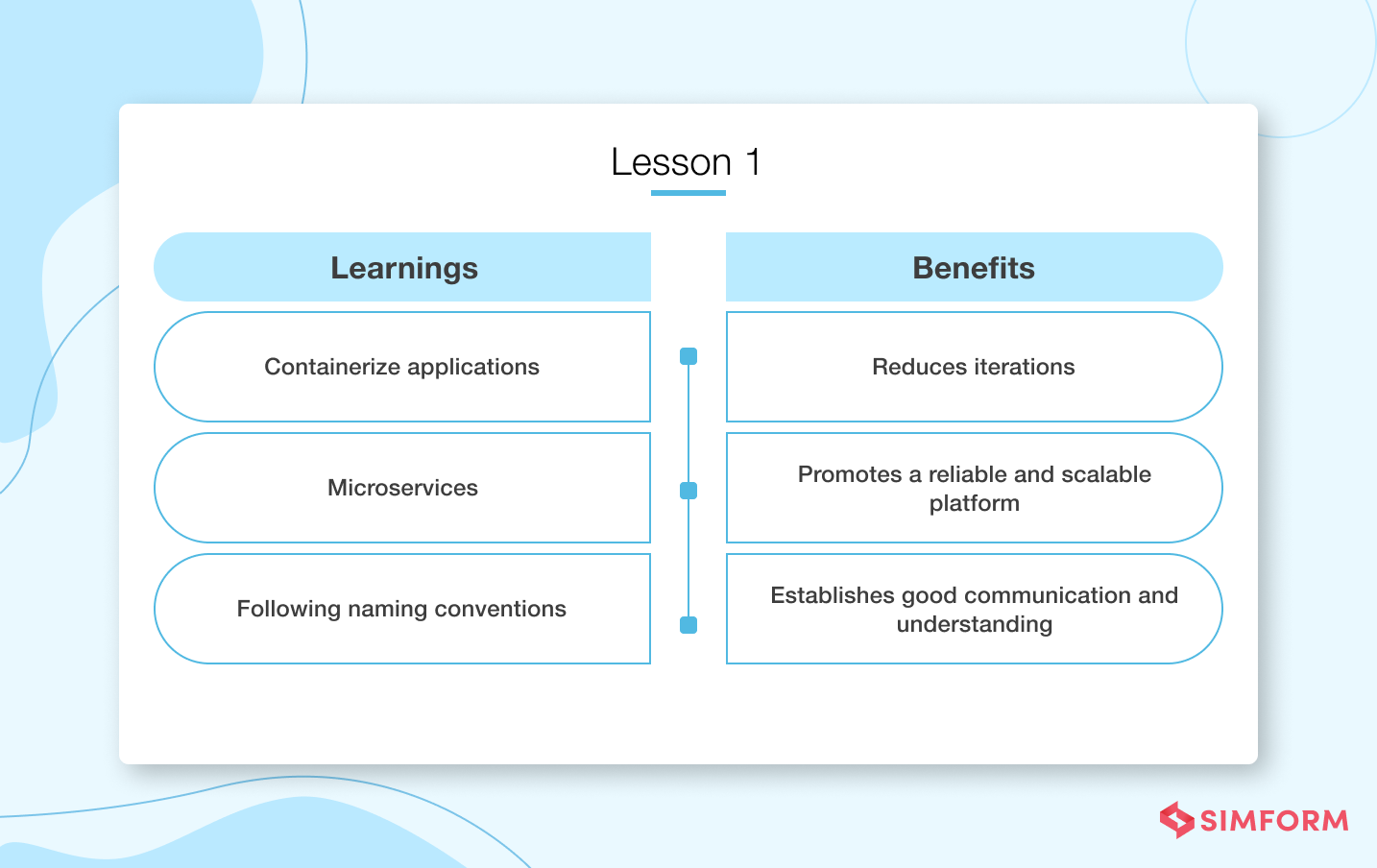
Mcdonald’s cloud migration indicates that containerized applications can reduce iterations in the development process. Also, microservices architecture in applications promotes a more reliable and scalable platform.
Attention to small details like naming conventions helped them establish communication between the groups during migration. This dictates how such aspects play a crucial role in a successful migration.
Mcdonald’s decided to take external help from the cloud engineers and consultants expert in the subject since cloud migration was an entirely new concept even for the technical teams due to the short span and its steep learning curve.
Lesson 2: Break down the goals and organize the requirements
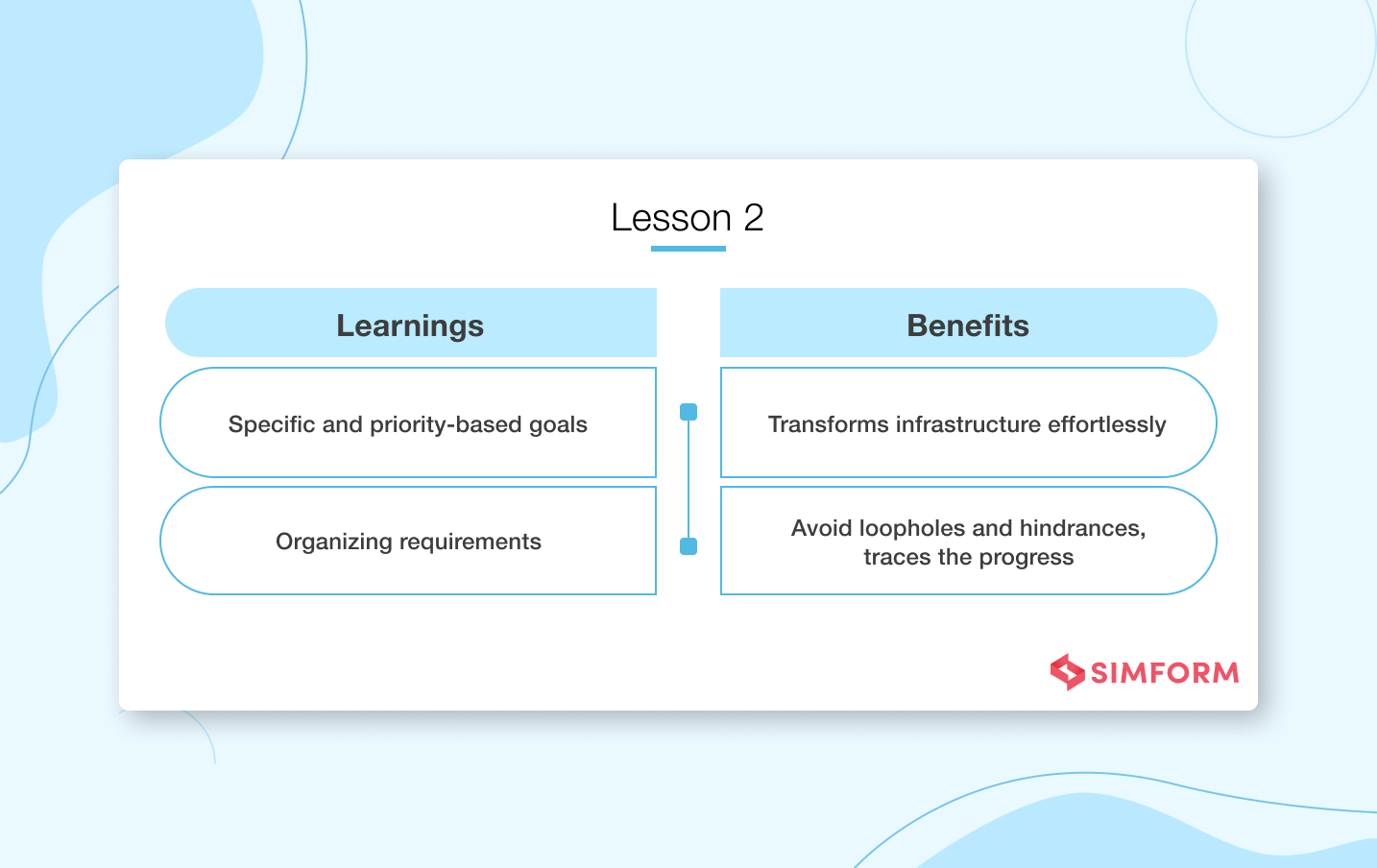
At Simform, we partner with organizations from non-agile backgrounds and help them embody an agile-centric development process. This practice revolves around learning, similar to the case of Jack in the Box’s.
Jack in the Box, during its cloud migration process, kept breaking down big transformation goals into smaller, more specific, and priority-based goals. It teaches us that implementing project scope in sprints is the key to infrastructure transformation.
We also learn to organize the requirements hierarchy. It helps trace the progress and avoid minor loopholes in the progress if any. Also, defining best practices to lay out features and leveraging them across the visualization kept them on the right track.
Lesson 3: Critical monitoring and choosing the right cloud-services partner
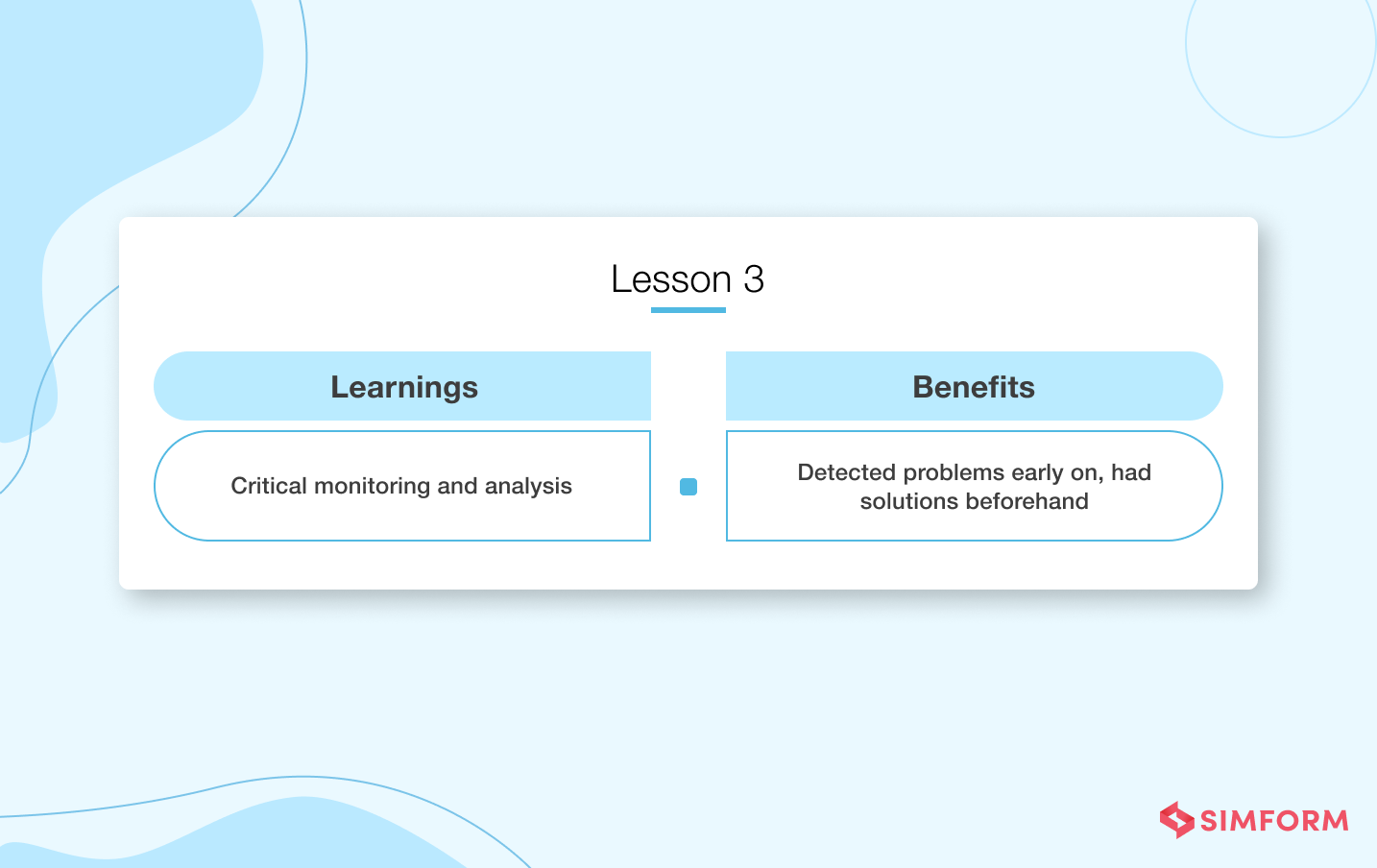
Wyndham Hotels & Resorts figured that their cloud migration process needed critical monitoring and data assessment to handle massive data size––like 9000+ hotels across 18 brands. So naturally, this dictates that you should avoid issues that could hamper migration.
They learned to transfer and monitor the data to understand the transaction time and how data flows across multiple apps. This meant they now had a solution before any problem arises with coding or data storage.
Unfortunately, very few companies detect this problem early on, so Wyndham Hotels & Resorts were fortunate to have a clear vision from the start. They initially had a traditional SaaS-based approach to standardize the cloud platform, but they realized that data centers demanded a lot of work and chose AWS instead.
Lesson 4: Embrace re-engineering and re-architecting
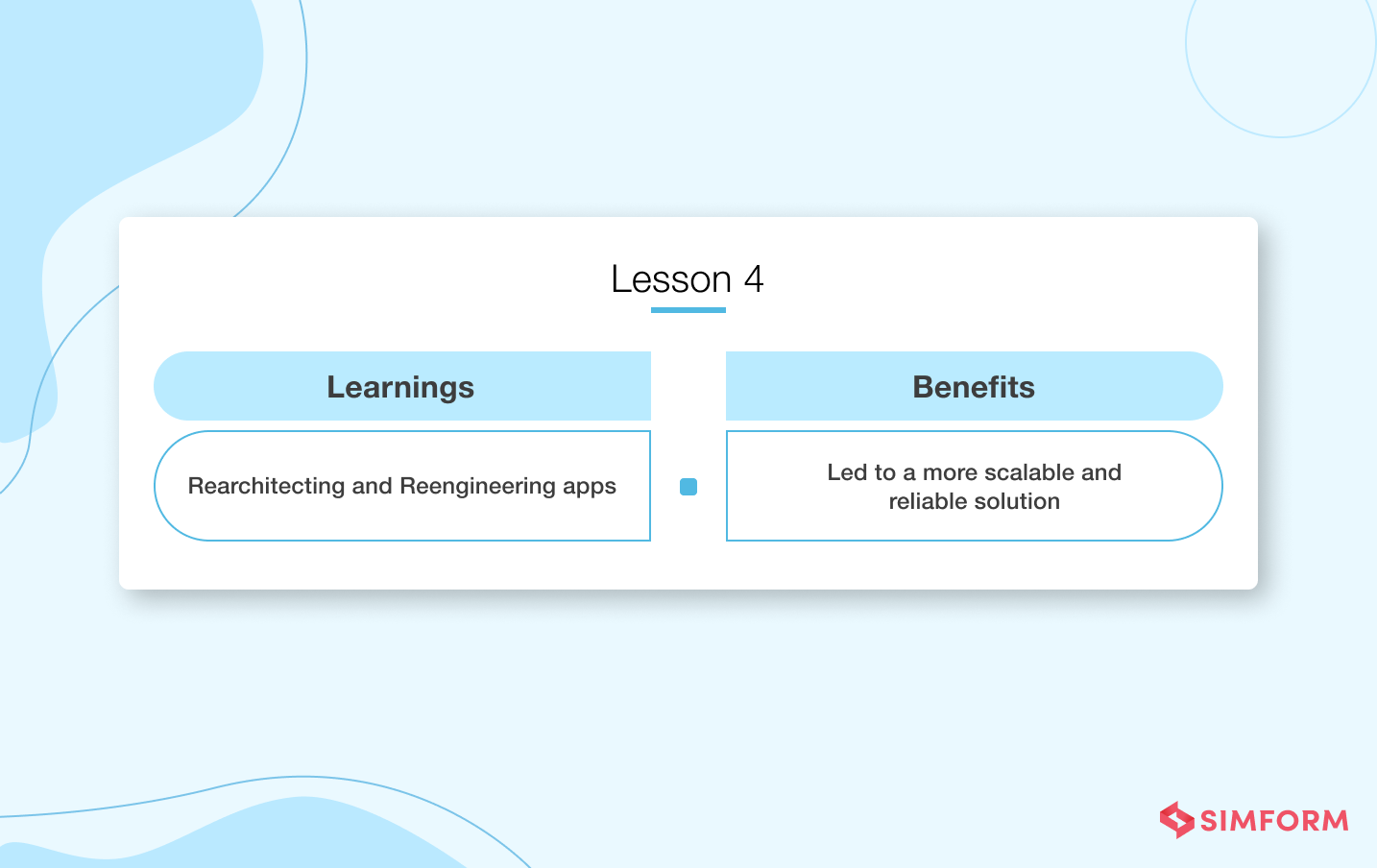
Netflix’s example changes the way companies think about reengineering what’s already existing in their infrastructure. It urges adoption and appreciation of the IT infrastructure re-engineering process for a successful migration to public clouds.
Also, Netflix didn’t explicitly rely on the “lift and shift” approach to migrate private to public clouds. Instead, since scalability and reliability were the primary concerns, the streaming company considered rearchitecting the application architecture, saving them a lot of money.
Lesson 5: Taking one task at a time, dedicated team & rigorous preparation
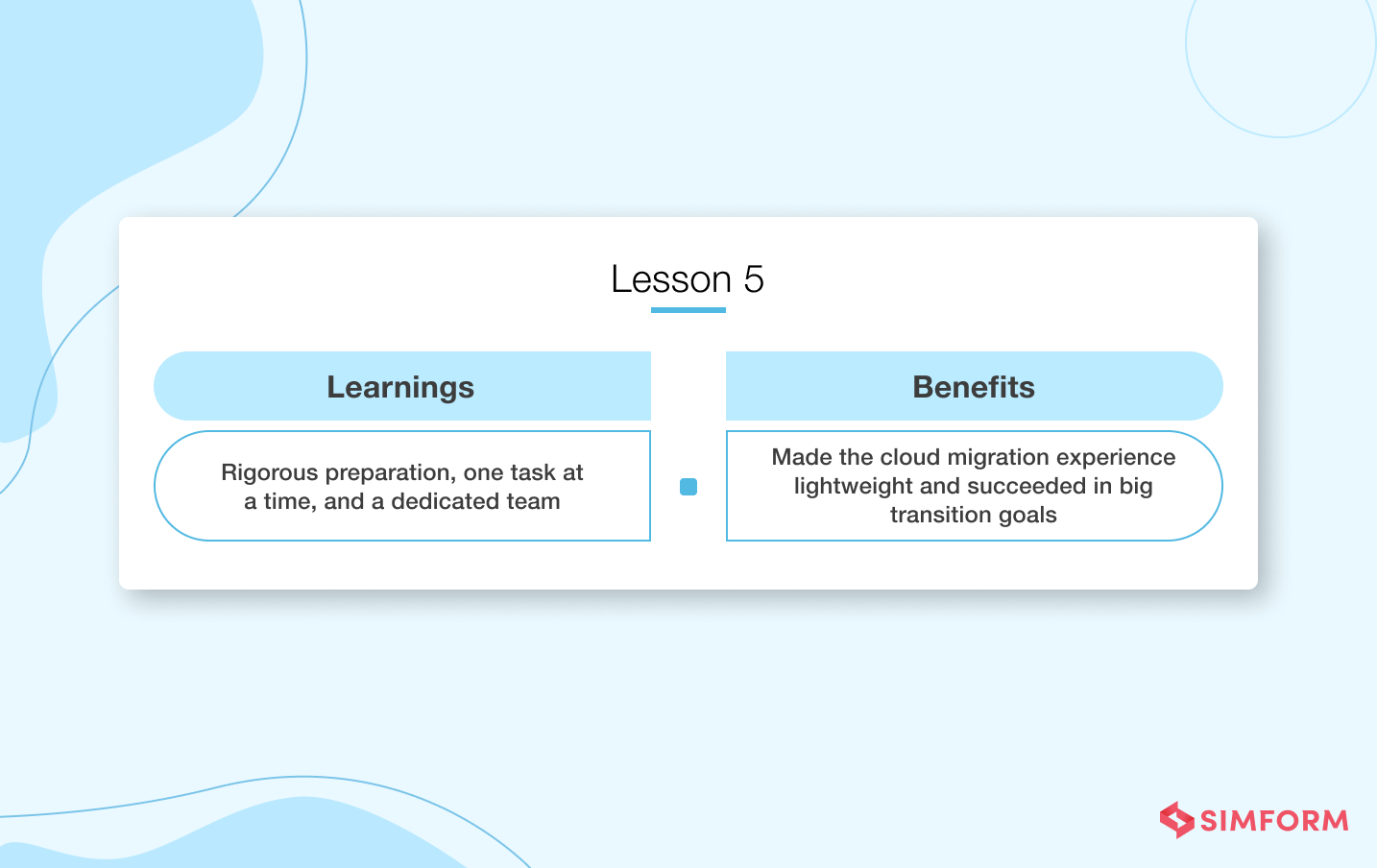
Spotify’s case teaches us to to take one thing at a time. Their engineering team migrated 50-70 services a week that helped their stakeholders, development team, and other members keep up with the progress. It shows us how conducting multiple processes simultaneously slows down the entire migration process.
Spotify provided a dedicated team to assist cloud engineers at Google who shared past experiences, knowledge, and necessary resources.
Spotify’s journey encourages organizations to have patience. It prepared for two years before the migration, and each migration took almost a year. So not only did it help them succeed in their transition goals but also made their migration experience lightweight.
Lesson 6: Choose a cloud platform that secures reliable communication among application components.
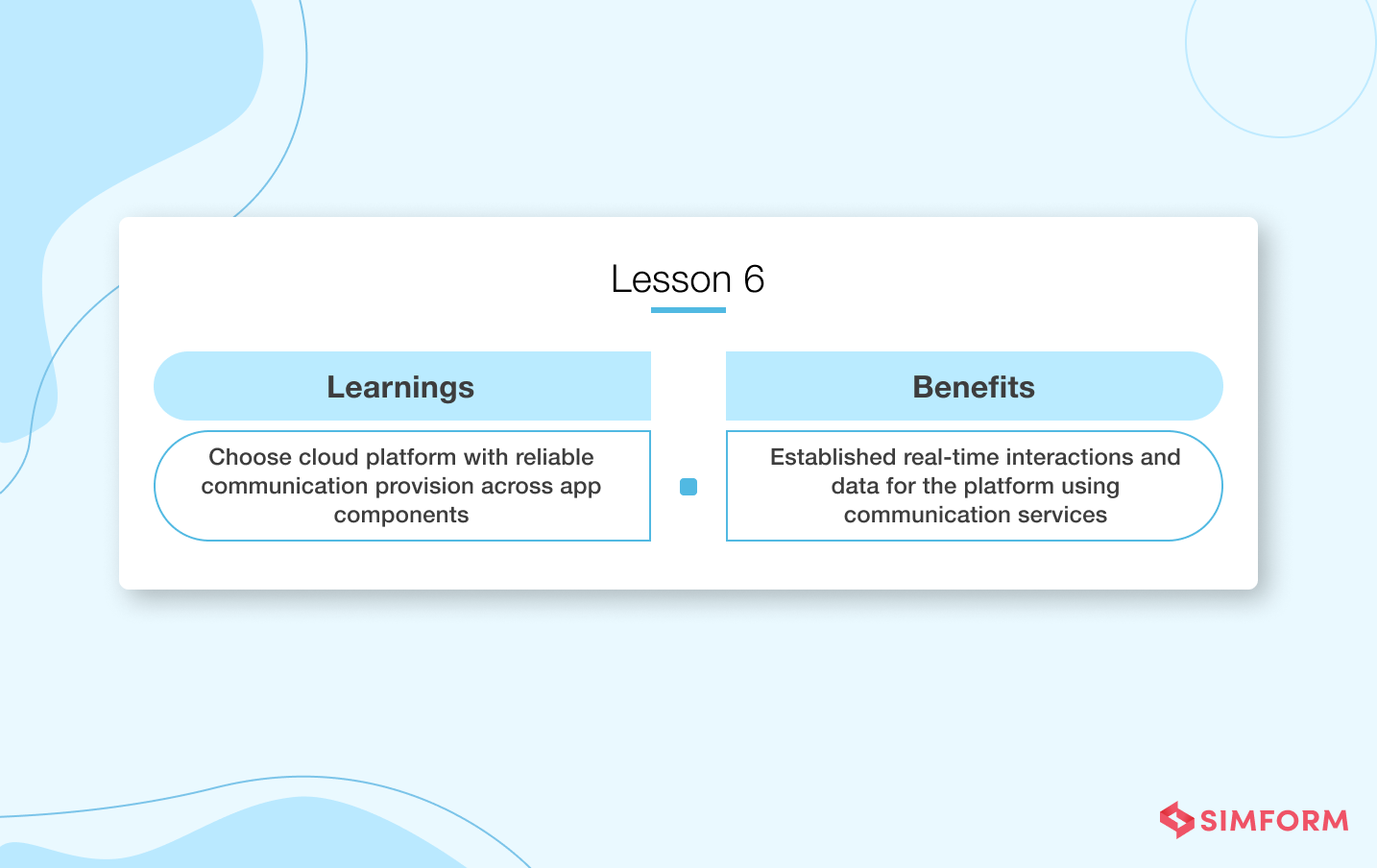
We learned from Aldo’s case that architecture with multiple APIs fails the systems when the platform needs real-time interactions and data. Since the mobile platform of Aldo had multiple APIs, they disrupted real-time communication with multiple data sources. Their experience prompts us to use suitable cloud services that offer a flexible environment with APIs to establish secure and reliable communication across application components.
Here’s everything you need to know about communication APIs and its alternatives.
Lesson 7: Customized migration approach brings better outcomes
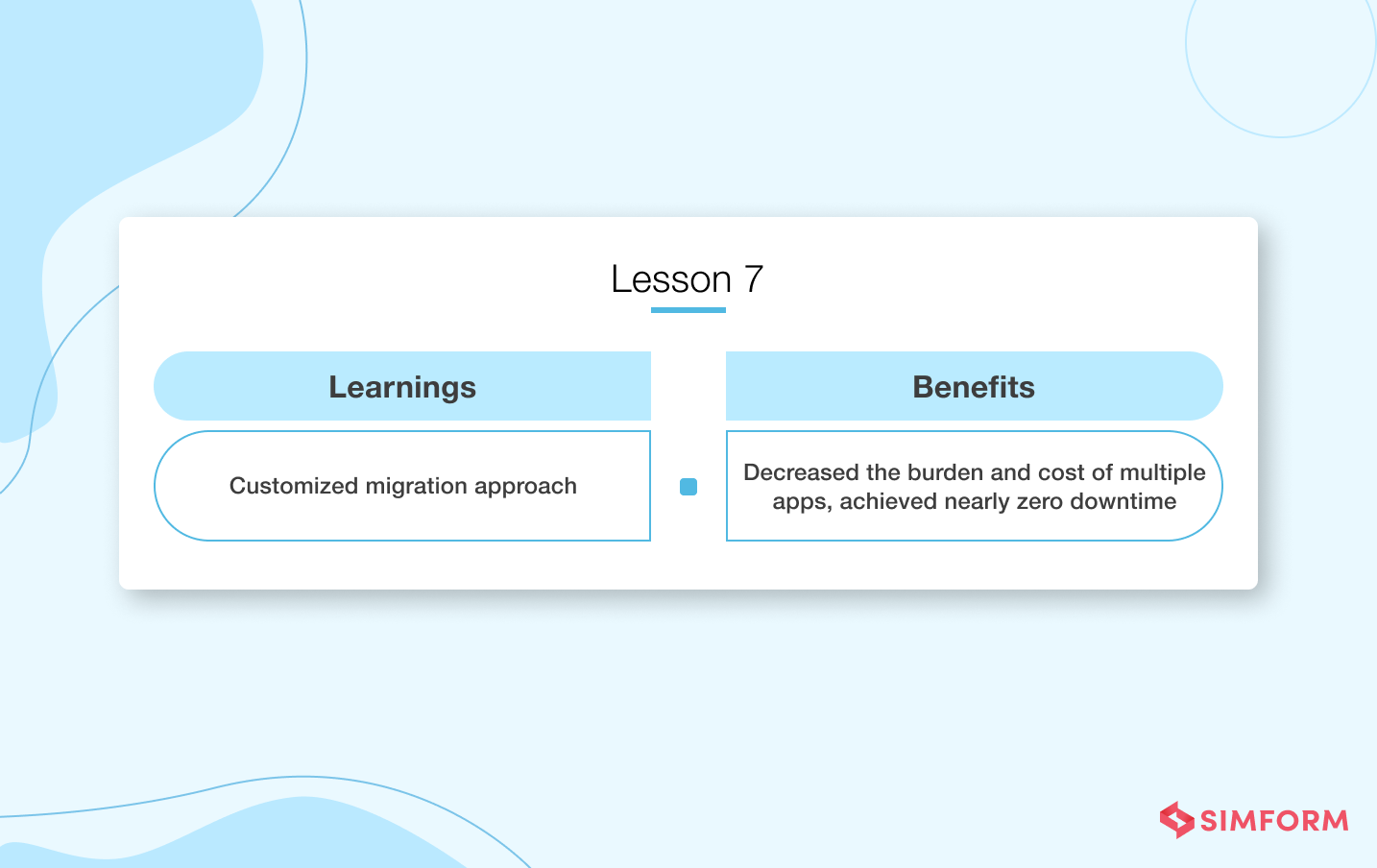
A+E networks picked a systematic approach to migrate multiple applications. They didn’t re-architect all of the 38 apps but kept its architecture requirement-oriented. They refactored a couple of apps to a service-based architecture running on serverless technology like Amazon Aurora and DynamoDB.
It shows that you could migrate many applications by customizing based on your needs and organizing apps into small groups.
Lesson 8: In-depth estimation is a game-changer
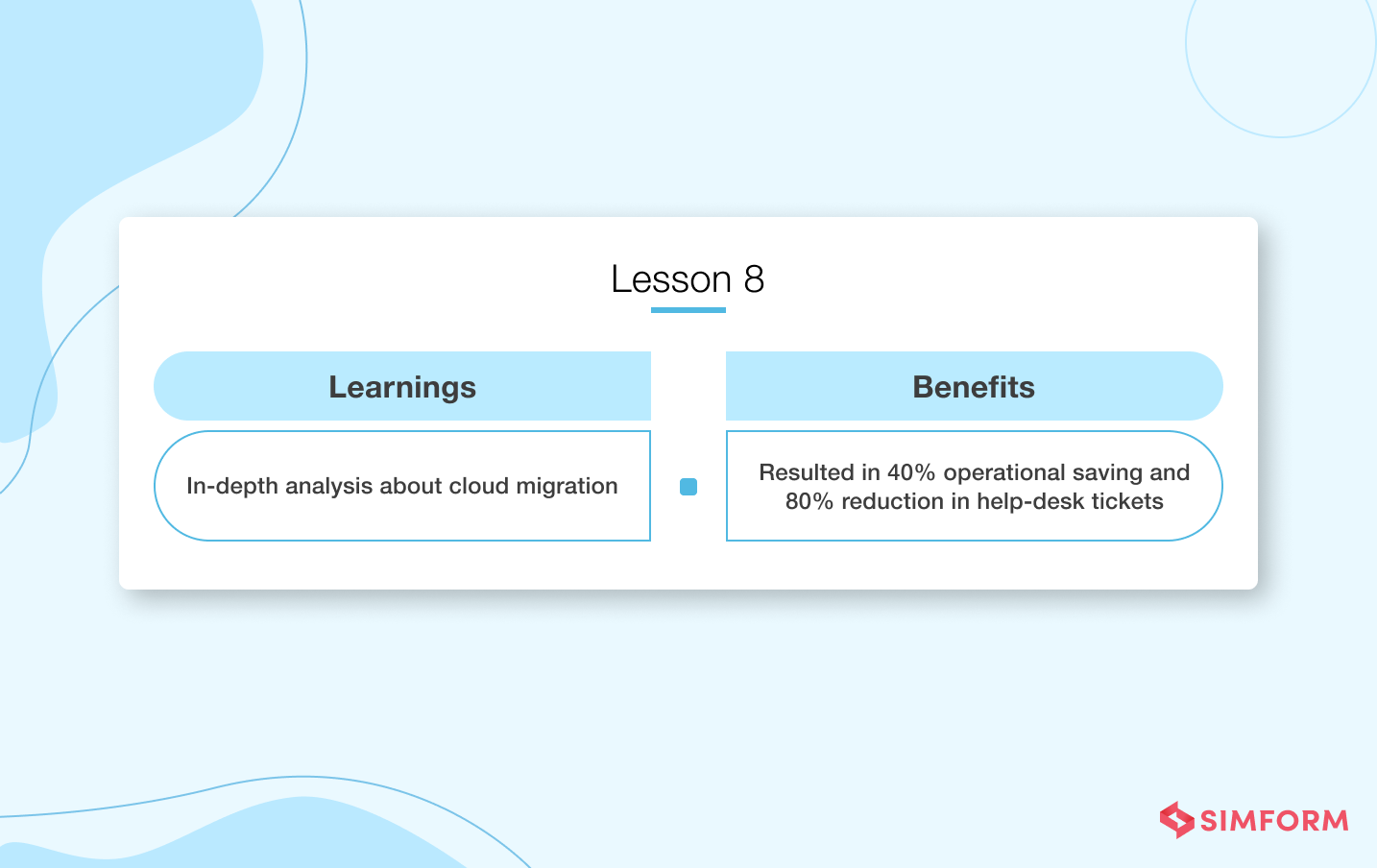
Coca-Cola’s journey to cloud migration started from the initial estimation that had pushed them into complete denial. But when they consulted a technical partner and eventually did the in-depth analysis, it resulted in 40% operational saving and an 80% reduction in help-desk tickets.
It encourages CIOs and CTOs to dig deeper even if the costs may seem high. This decision could turn things around as Cocacola did.
Lesson 9: Optimizing the usage of cloud assets and autoscaling
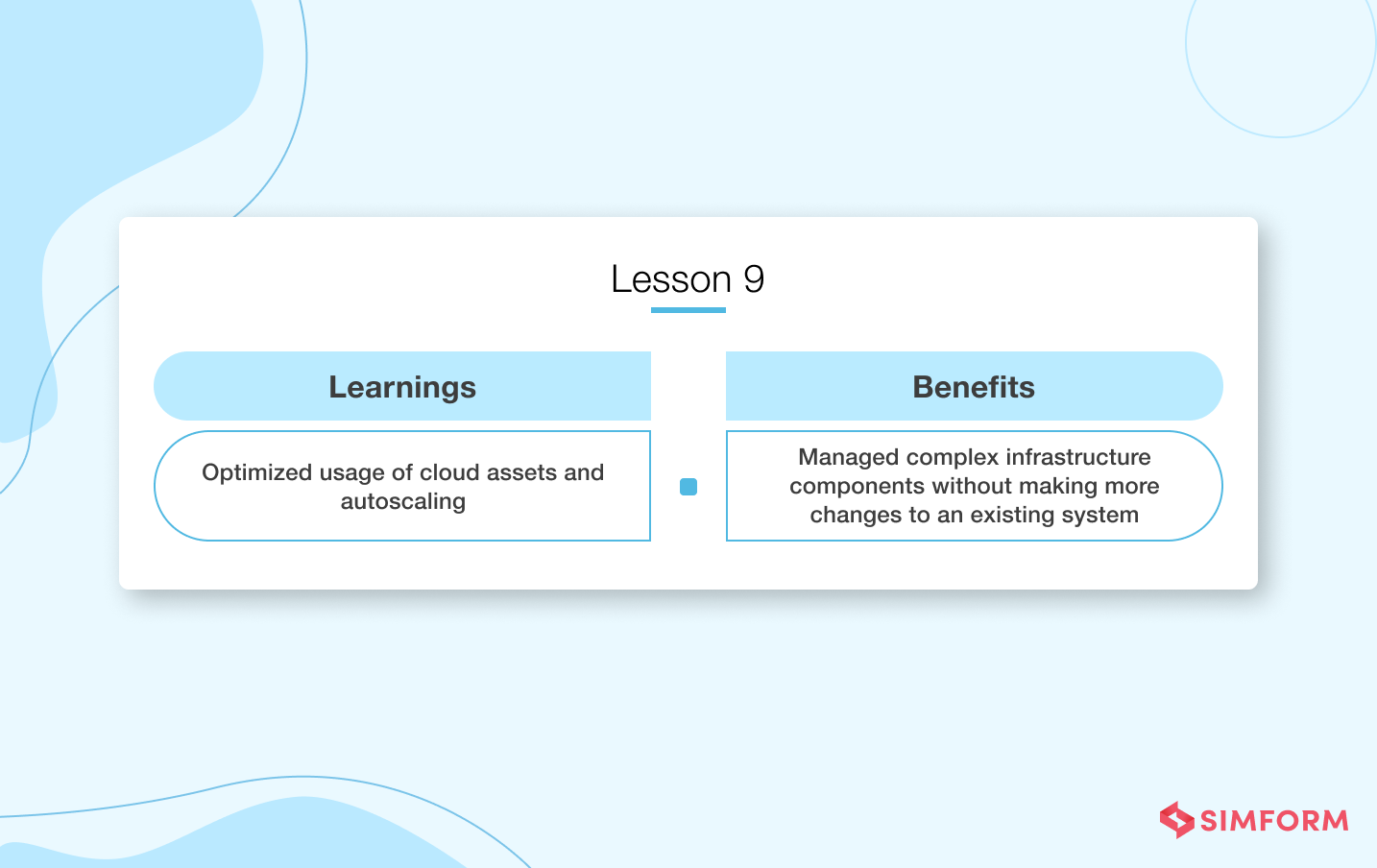
Pinterest had already been using AWS EC2 for quite some time then and needed a solution to reduce the reliance on resources and optimize the development. AWS EC2 charges for the instances that you use for development. With docker containerization powered by Kubernetes, the team reduced the instance hours and, in turn, made it cost-effective.
It teaches us to optimize the Jenkins Kubernetes Clusters deployment with the decentralization of resources. This can help you with the management of complicated infrastructure components. For example, Jenkins helps build, test, and deploy applications but is complex to manage. With decentralized infrastructure architecture, you can manage it without having to change your existing system too much.
Also, the second most important learning from Pinterest is that auto-scaling capabilities can help you reclaim the capacity when your system is running in non-peak hours. Finally, moving to Kubernetes with services like Amazon EKS can help you achieve on-demand scaling and application load balancing.
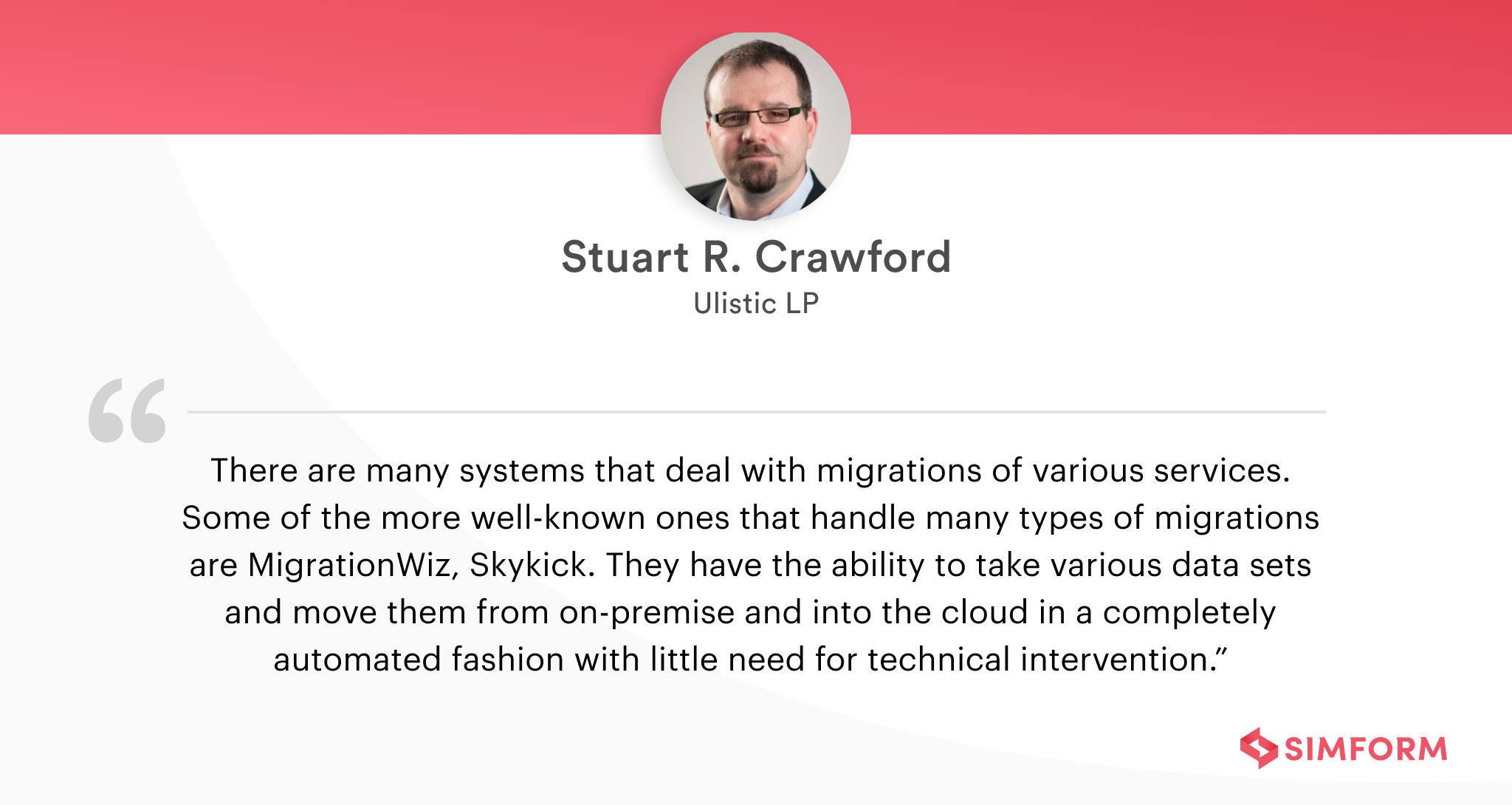
Auto-scaling is a great way to optimize your cloud costs. However, it’s not the only way, so here are some cost-optimization tools that you can use with AWS:
- AWS Cost Optimization Explorer
- AWS Budgets
- Amazon CloudWatch
- Cost Optimization Monitor
- EC2 Right-Sizing
Explore more about Cloud Cost Optimization Strategies with Simform.
Lesson 10: Leveraging cloud-native tools and services
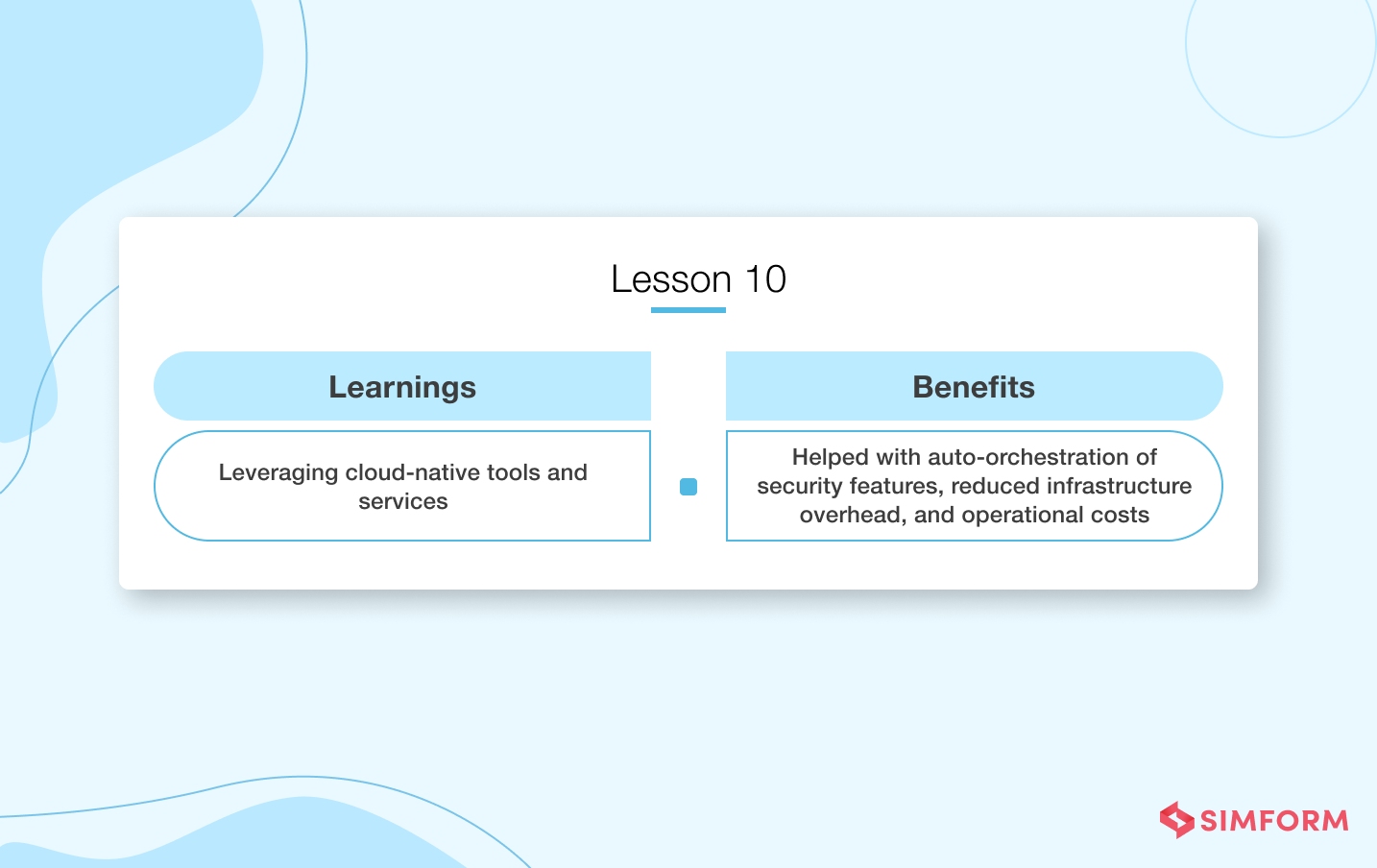
Symantec managed to reduce 40% of database-running costs by moving to cloud-based services from Microsoft Azure. So you could also leverage database infrastructures on the cloud-like AWS RDS, Azure Cosmos DB, and others to reduce the infrastructure overhead and optimize the operational costs.
Cloud-native tools can help with the Auto-orchestration of security features and policies.
Take a cue from Symantec and using different cloud-native tools or cloud-managed services to enable security features in your legacy applications. Cloud services like AWS and Microsoft offer many cloud-managed services to help with the automatic deployment of security policies.
Need to know more about Tools, Challenges, and Best Practices for multi-cloud management?
Lesson 11: Distribution of content and autoscaling through AWS EC2 Instances
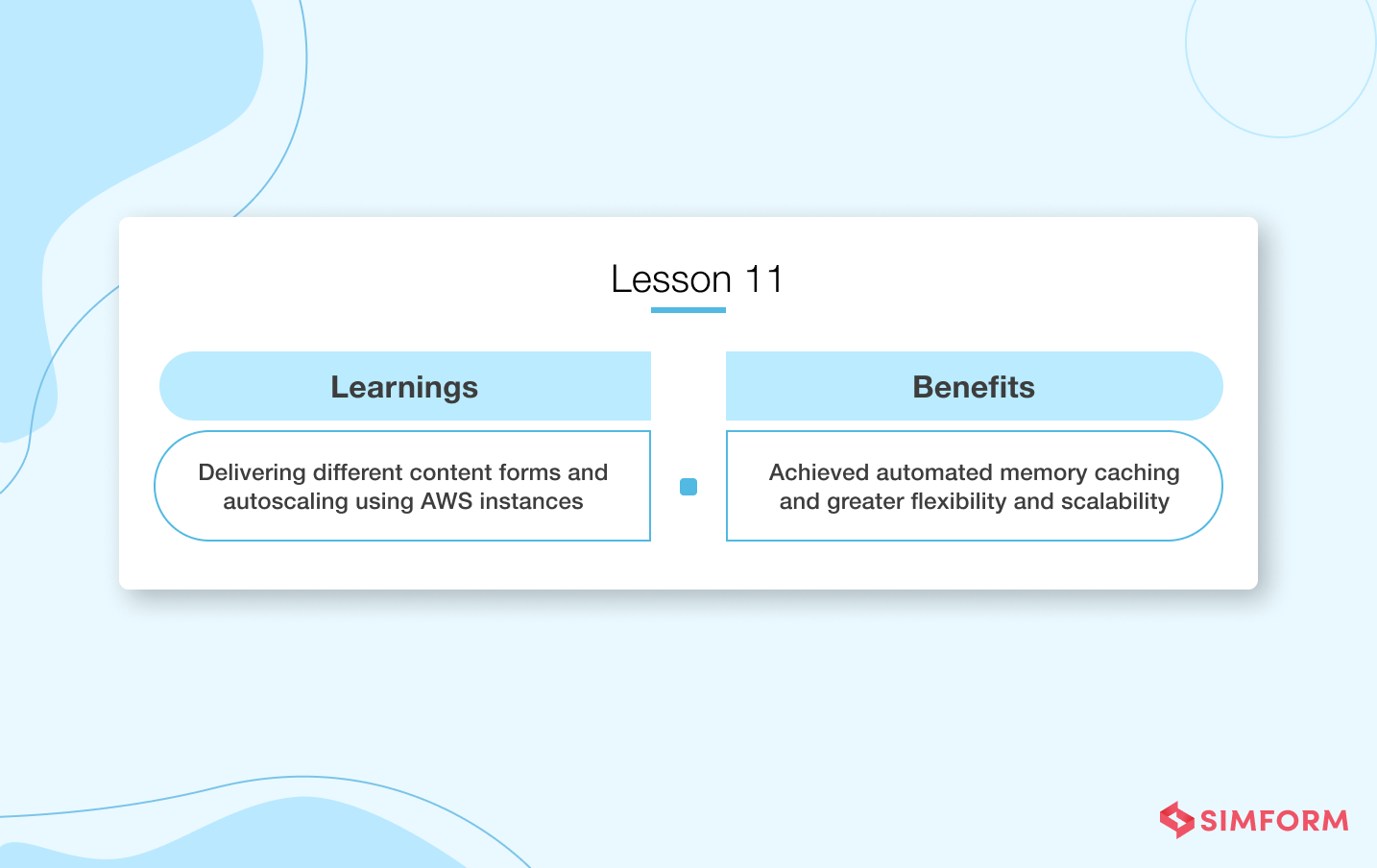
Any content-based business can leverage Amazon CloudFront to deliver different content forms at lower latency and faster transfer speeds. For example, WWF leveraged the Amazon CloudFront through PoPs(Points of Presence) for rapid content distribution.
Using Amazon CloudFront can be helpful in many ways, and this is what we experienced during a project at Simform. Listing out some benefits of leveraging Amazon CloudFront:
- Automated memory caching for the website’s content
- Integrated Elastic Load Balancing to maintain the traffic and scale the application
- Stored videos using Amazon S3
- Converted videos to the formats required by CDN using Elastic Transcoder across devices
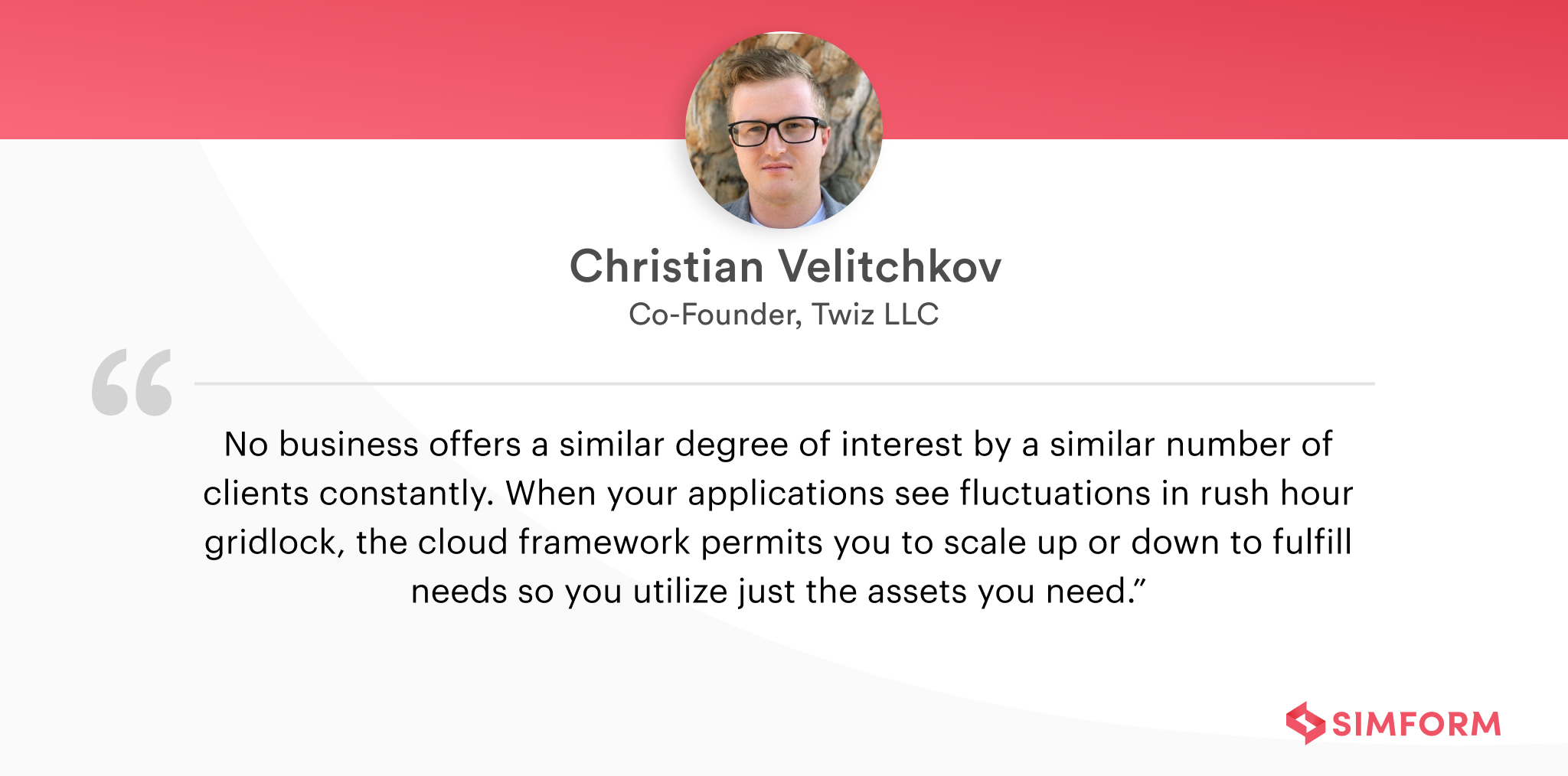
WWF’s required flexibility and scalability in their infrastructure to handle peak traffic and if your migration also sounds similar, fret not! Whether you need to scale up or down based on your IT infrastructure’s traffic, AWS EC2 instances can help. They enable apps to achieve high throughput and IOPS(Input/Output Operations per Second) with consistently low latencies.
Conclusion
We’d love to add more to this list from your cloud migration lessons. So feel free to reach out to us to build your migration path, decide cloud migration strategy and get end-to-end support.
Remember, cloud migration is not about being ‘reluctant.’ Instead, it’s an origin to start your journey as a more prominent platform available for the world by making it endlessly scalable.
We’ve studied the cloud migration experiences of many tech giants, and as a select partner of AWS cloud services, we’ll be delighted to assist you in transforming your cloud migration goals. So head over to our ebook for more details on the cloud migration checklist, strategies, challenges, and case studies.
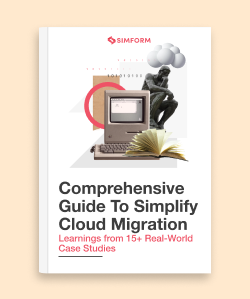
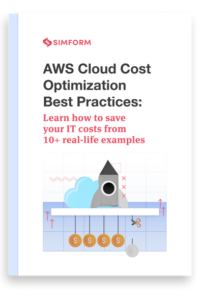
chert
Thanks for an informative blog